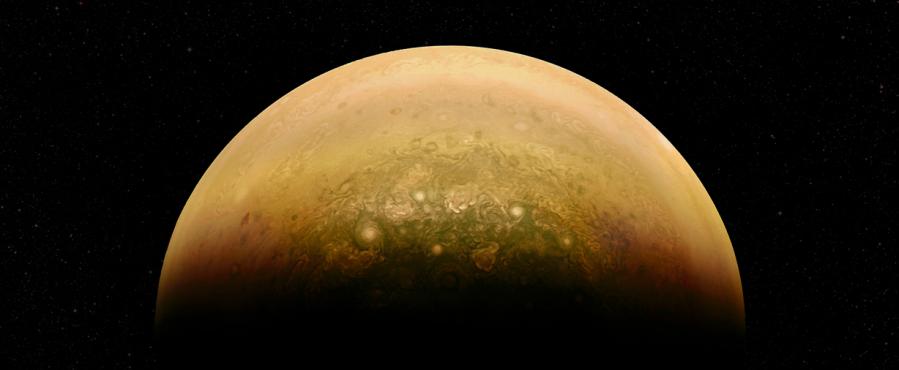What does that have to do with Jupiter? Jupiter is almost large enough to be a star. Our sun, Sol, does not have a partner star.
Jupiter and Saturn are unique in that they emit more energy than they receive from the sun. Jupiter has almost enough mass for nuclear fusion to occur at it's core. But it doesn't and it is not a star.
The atmosphere of Jupiter is mostly Hydrogen and Helium. Anytime hydrogen and helium is released in the Earth's atmosphere, it is eventually lost to outer space. The Earth does not have the gravitational field to hold on to these light elements. The gravity of Jupiter is so strong, NASA has to be careful how close a probe approaches Jupiter. There is a point where the probe cannot escape the gravitational field.
In the atmosphere of hydrogen and helium, swirls of ammonia and water clouds occur. The giant Red Spot is several times the size of the Earth and a huge hurricane. Two more smaller red spots have been found.
Galileo developed the first telescope and discovered five moons orbiting Jupiter. They are called the Galilean moons. This discovery allowed Galileo to doubt the theory that everything in the universe revolved around the Earth. This lead to his assertion that the planets orbited the sun. Unfortunately, he was tried for heresy and made to recant. Like today, explanations of the natural world had crept into religious dogma and common thought. Jupiter has 53 documented moons and 14 provisional moons which may lead to 67 moons in total. Jupiter has three faint rings.
Jupiter's day is just under ten Earth hours.
Jupiter's year is 4333 Earth days or 11.8 Earth years.
https://solarsystem.nasa.gov/planets/jupiter/indepth
 |
| Montage of Jupiter and the Galilean satellites, Io, Europa, Ganymede, and Callisto, all photographed by Voyager 1. Photo courtesy of NASA |
 | ||||||||||||||
|

Hi Ann - the planets are wonderful objects to know about - and we're getting so much more information about them ... thanks for this on Jupiter ... the sizes and distances always amaze me ... cheers Hilary
ReplyDeletehttp://positiveletters.blogspot.co.uk/2017/04/j-is-for-jellicles.html